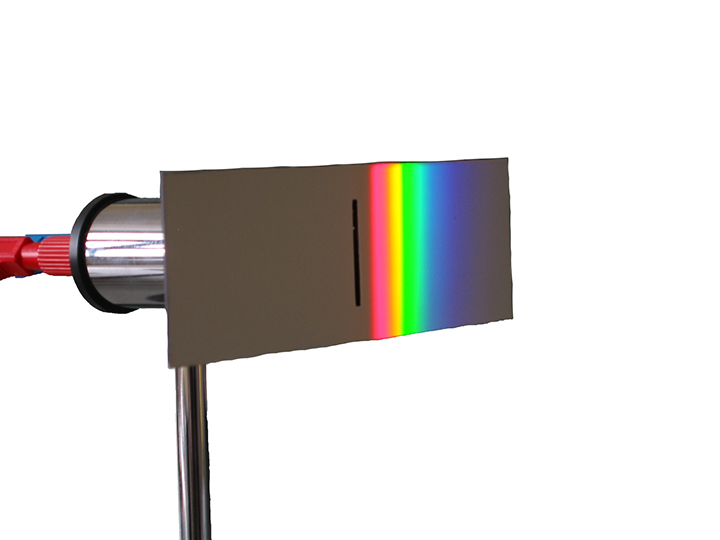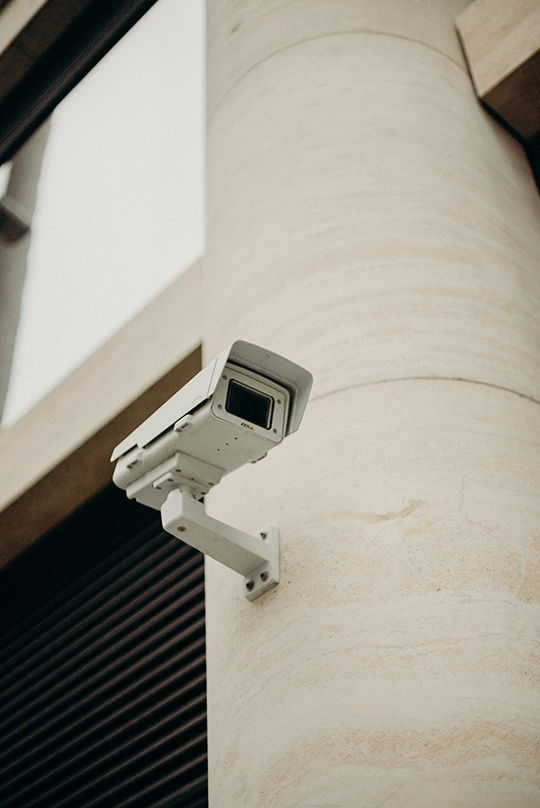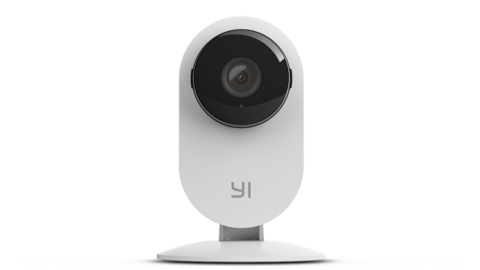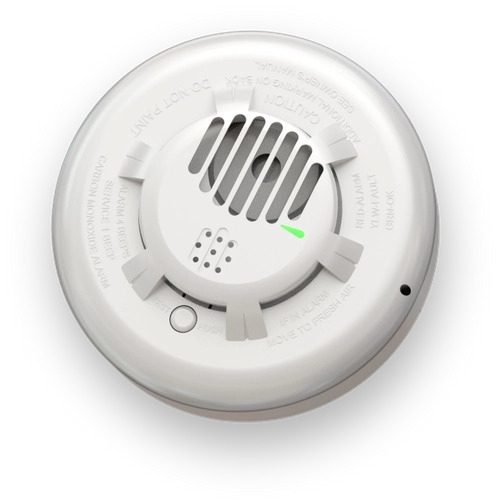Infrared Detector
Link Copied

One of the most common types of sensors is the infrared detector. The infrared detector is mainly used as a motion detector because it can determine the difference between the sway of a tree branch and a person walking through the yard. An infrared detector can also be programmed to only respond to larger objects and ignore smaller creatures, making it pet-friendly. Infrared detectors are quickly becoming popular for motion sensors and cameras. So, what is an infrared detector, and how does it work?

What are Infrared Detectors?
Answer: Infrared detectors are devices that react to infrared light.
Infrared detectors use sensors that react to infrared radiation. Infrared waves cannot be seen with the human eye. The eye can see a basic spectrum of color—everything that can be seen in a rainbow of color. However, there are colors that range outside of a rainbow in the electromagnetic spectrum. Humans are called “trichromats,” meaning that we can see red, green, and blue and everything in between. Yellow, for example, is simply a shade between green and red. People are, essentially, colorblind compared to some animals who can see a wider range of colors. Some animals are tetrachromats and have four color sensors. Even more stunning is the mantis shrimp, which has 12 color sensors.
Seeing how little our eyes are actually able to comprehend, it’s not surprising that we cannot detect infrared radiation with our eyes. We can, in a way, since infrared in the form of heat or temperature. The infrared wavelength is between 0.75 and 1000µm (micrometers), while the visible spectrum for humans is between 380 to 740 nanometers. The spectral range of infrared light is separated into two categories: near IR, mid IR, and far IR. Some scientists speculate that, although humans can’t directly see infrared light, the eye will respond to far IR.
Infrared sensors are used in motion detection, night vision, astronomy, art restoration, gas detection, and a variety of other applications. Infrared light is a vital part of our lives, whether we realize it or not.
Many sensors pick up IR in the form of infrared radiation. Infrared radiation can be felt as heat. If looking through an infrared sensor, you will see the infrared appear on the sensor in the form of visible light. Blue represents cooler temperatures, and red represents hotter temperatures. The colors that are shown on the sensor are simply an interpretation of the infrared radiation that is emitted. The sensor translates the heat temperature into thermal imaging. For example, if we use an IR detector and direct the sensor towards a fire, we will see red at the center of the fire dispersing outward into yellow, green, and then blue. Below is a video with more about infrared waves.
How Does It Work?
Answer: Infrared detectors work by reacting to IR particles in the air or by absorbing the sub-red light.
Infrared detection uses a variety of materials to create a reaction that responds to electromagnetic radiation. The sensor will combine a layer of mercury cadmium telluride, a layer of lead sulfide, with a layer of indium antimonide substrate in silicon. The metals create a semiconductor within the device. The sensitivity relies on whether the device emits radiation or absorbs it. The light is transformed inside the structure into an electric current. Light emits photodiodes, meaning that the light emits spectral wavelengths that can be interpreted as an electrical signal. Depending on the type of sensor, this can be interpreted into a thermal imager, a temperature range, a motion detector, or an LWIR camera.
Motion detectors use this technology in a different way. When motion sensors detect infrared radiation to trigger an alarm, the sensor is using passive infrared technology. Passive infrared detectors are more sensitive than sensors used for TV remotes and computer mouses.
To understand how passive infrared detection works, first understand that all living things emit a form of infrared radiation. Depending on the temperature emitted from the object or thing, more or less radiation will be emitted. And, as we mentioned earlier, humans can’t see infrared radiation, but we’ve created technology that is able to pick up the spectroscopy. The sensitivity of the emitter allows for the measurement of infrared radiation. The sensor uses something called “pyroelectric sensors” for sensing the radiation. The two pyroelectric sensors are placed side by side. When something or someone enters a room where the detector is installed, electrons activate the sensitivity levels of the device. When the device is activated, the alarm is triggered.
Because the sensor is triggered by infrared activity, it’s hard to trigger a false alarm. However, that doesn’t mean that the sensor can’t be triggered by a false alarm. If the sensor is hit directly with white light, the alarm will be triggered. This is because the sensors will be overwhelmed with the amount of light that is hitting it all at once. To avoid this false alarm, do not place the sensor where the absorption of light will be too high for the sensor. Put the sensor in an area where it will not be influenced by direct light. Thermal applications can also be triggered during house fires, although there may be more to worry about during a fire than the motion sensor going off.

How Much do Infrared Sensors Cost?
Answer: Due to the prevalence of infrared technology, IR sensors are fairly inexpensive.
PIR sensors and infrared detectors are inexpensive. The technology can be found everywhere in life. They are used in TVs and TV remotes, police radars, astronomy tools, and security equipment. Infrared sensors can be found everywhere in our daily lives. Due to their prevalence, infrared technology has been made very accessible to the public.
The global infrared detector market sells billions of IR detectors every year, making it the most-used sensor on the market. Infrared emitters are highly versatile since they can be used for heat sensitivity, gas analysis, spectral response, and fire detection.
IR sensors are meant to be used and combined with other tools. IR sensors are most commonly combined with everyday items, though they are also found in high-quality military-grade devices. In home security, IR sensors are commonly used for motion detection and cameras. Since IR technology is safe, reliable, and inexpensive, devices that use IR detection are known for also being safe, reliable, and inexpensive.
Some companies may try to replace IR technology with more expensive detection technology, such as microwave sensors. However, these “premium” sensors use more energy to maintain, making them less effective.
PIR sensors cost under $20. When combined with a motion sensor or surveillance camera, the product may cost more. Using PIR detection is the least expensive choice.

How Far Do IR Sensors Detect?
Answer: Infrared sensors can sense up to 30 feet.
Passive infrared sensors can detect movement up to 30 feet away. When a PIR detector is placed in a room, the sensor will be able to “see” the entire room. Most homes will only need to use one IR sensor to cover an entire room. Some variations of the PIR sensor may be able to see farther, up to 40 feet, while others may only be able to see up to 15 feet. Before buying a sensor that uses IR detection, it’s important to first check the range of the sensor.
How Are Infrared Detectors Used in Home Security?
Answer: Infrared detectors are used in IR security cameras, motion sensors, window sensors, heat sensors, and more.
In home security, infrared detectors are key to having a secure house. They provide essential tools to help home security devices become more accurate and more reliable. An infrared detector can be used in IR cameras, detector arrays, motion sensors, and other devices to improve accuracy. This accuracy helps homeowners to feel safer while they are in and away from their home. Here are the three main features that use infrared radiation detection.
IR Security Cameras
Security cameras improve every year as new technology is created to give them better quality recording. To save energy costs (for both wired and wireless systems), some infrared security cameras have been installed with motion-activation. When using motion activation, most cameras rely on infrared radiation detection, even if there are a variety of different kinds of motion detection that could be used. Infrared radiation is the easiest kind of motion detection to be used with home security cameras because infrared detection doesn’t wear out over time. Other motion sensors might wear down and become less accurate over the years when used with a thermal security camera.
The cameras are installed with IR detection and begin to record the moment the thermal security camera detects movement within the frame. This stops the camera from recording pointless hours of blank footage. Now, the wireless infrared camera only catches the important moments. This saves money, time, and energy to ensure that the homeowners are getting the most out of their home security system.

PIR Motion Sensors
In home security, IR motion sensors are the most popular type of motion sensor used. There are PIR, Ultrasonic, Microwave, Tomographic, and combined motion sensors available on the market. There are benefits to each of the sensors, but, for most homes, the PIR sensor is the best option. It is the most affordable type of motion sensor, and it uses a very small amount of energy to operate. Other motion sensors, like the microwave sensor, can drain energy and cost hundreds of dollars to install.
PIR stands for passive infrared motion sensor. It is activated by body heat and is efficient. These sensors can be programmed to be pet-friendly for homes with cats and dogs. They are sleek, small, and can be hidden inside of a house. Best of all, this type of motion detector can be made into a “smart” sensor and connect with your phone, allowing you to have complete control over the sensor.
Heat Sensors
Advanced smoke and heat sensors use thermal detectors for temperature measurement. To sense the change in heat, the sensors are installed with passive infrared sensors. These sensors are programmed to set off an alarm when the temperature in a room rises too quickly. The sensors react when one of the three situations occurs:
A temperature of 125 degrees for more than three minutes. A ten-degree increase in temperature in under one minute. If the temperature hits 125 degrees in under one minute (a combination of the first two).
By using infrared technology, the sensors are able to accurately detect the presence of a low-smoke fire, ensuring that family and homes are safer than ever.

Carbon Monoxide Detectors
Carbon monoxide detectors use PIR technology in order to better sense the presence of the small gas particles in the air. Carbon monoxide is a deadly gas that affects 20,000 to 30,000 people every year. The gas is odorless and colorless, making it undetectable without a carbon monoxide detector. In order to make carbon monoxide detectors more accurate, the devices are built with an infrared laser. When the beam is disrupted by carbon monoxide particles, the device triggers the alarm. The infrared technology helps to ensure that carbon monoxide detectors remain accurate. PIR detection helps to protect families and helps to ensure that homeowners are getting the most out of their home security systems.
Best IR Home Security Systems
The best home security system that uses infrared detection is Cove Security. Cove security uses a unique blend of smart technology and infrared detection. When combined, the sensors create a reliable safety net that homeowners and families can rely on.
Cove Security offers PIR motion sensors, motion detection cameras, flood and freeze sensors, heat sensors, fire and smoke detectors, and carbon monoxide detectors. Each smart device uses infrared technology to provide unmatched security for your home. Cove’s devices are available across the nation for $15 dollars a month, nearly three times less than competitors. For more information, call a Cove representative today.
Ready to get started?
Take this short quiz to build your customized system today!
Takes less than a minute


